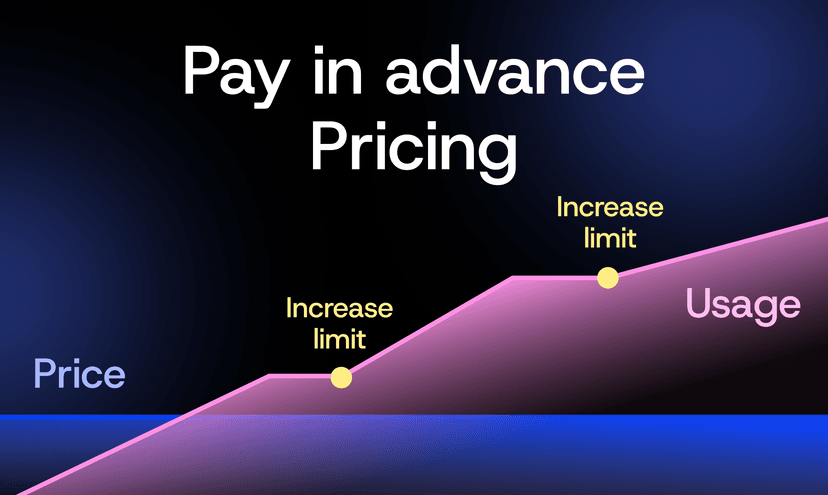

TL;DR: Pay-in-advance pricing is a simple usage-based model where customers pre-commit to a set amount of usage at a known rate. It trades some flexibility for predictability, making it attractive to buyers who want cost certainty and providers who want stable revenue.
In a pay-in-advance model, customers agree to a fixed volume of usage before the billing period starts. Pay in advance is best for usage that can be easily forecast like user seats or the number of active projects (for a project management software). The usage agreement is most often treated as a usage cap and customers are billed on that commitment even if don't they consume their full allotment.
It’s similar to pay-as-you-go (PAYG) pricing. Both are usage-based, but the key difference is risk and predictability. With PAYG, usage is measured throughout the pay period and then the cost is determined. With pay-in-advance, customer agree to price for the period upfront. Pay-in-advance therefore provides accurate and consistent pricing.
Pay-in-advance is less common than other usage-based pricing models. The most consistent examples of it are:
Per-seat SaaS plans: Many SaaS tools (Slack, Figma, Jira, and Notion to name just a few) use a seat-based model, which is pay-in-advance pricing.
Telecom: Mobile and data plans are classic examples, in which you prepay for a set amount of GB or minutes each month.
Trucking Software: JourneyTMS uses pay-in-advance for their DAT Load Board users, a specific type of user seat common in trucking applciations.
Pay-in-advance pricing is most common when customers need high cost stability. By pre-committing to a set amount of usage, buyers know exactly what their bill will be, which makes budgeting and approvals simpler. This is especially appealing to larger enterprises, government buyers, and industries with strict procurement or compliance requirements, where predictability matters more than flexibility. If that level of certainty isn’t a priority, other usage-based models often offer more flexibility and can better match cost directly to actual usage.
Pay-in-advance pricing sits between pure usage and flat subscriptions. It’s a good fit when customers value predictability but usage is still variable. Buyers accept some risk of “unused capacity” in exchange for cost certainty. It’s not as flexible as PAYG and not as simple as flat-fee, but for the right products (and the right customers), it’s a straightforward, well-understood model.
If you're interested in learning more, checkout our deeper dive into pay-in-advance pricing and when to use it.